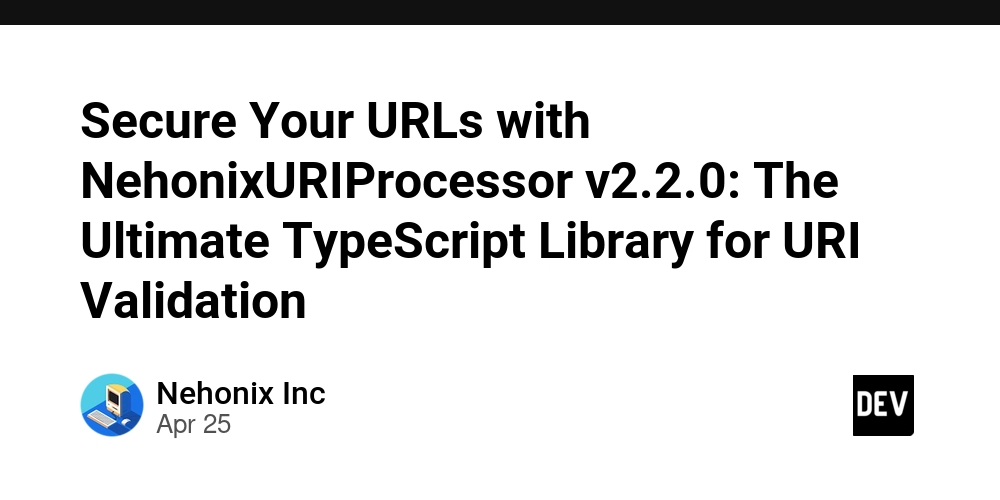Building a Bulletproof E2E Testing Strategy for User Authentication
Building a Bulletproof E2E Testing Strategy for User Authentication Authentication is the gateway to your application, making it critical to test thoroughly. Here's how to build a comprehensive testing strategy for auth flows. Testing Registration Flows Registration typically involves: Form validation Account creation Email verification Initial profile setup The verification step tends to be the trickiest. We've developed a streamlined approach using dedicated testing mailboxes that reliably receive verification emails, making our tests deterministic instead of flaky. Login Testing Considerations Test various scenarios: Successful login Invalid credentials Account lockout Password recovery Multi-factor Authentication Testing MFA adds complexity: SMS verification Authenticator apps Email codes Recovery methods Password Reset Workflows This often breaks automation due to email dependencies. Our solution involves pre-provisioned mailboxes that can be programmatically checked for reset links. Best Practices Isolate email dependencies: Use a separate email testing system rather than production email providers. Create isolated test accounts with predictable states Test security boundaries, not just happy paths Simulate API failures intentionally I've compiled these practices while working on a massive authentication system overhaul. The email verification part was solved with a specialized system — those interested in a similar approach can check my setup (hint: it involves omypost). What authentication edge cases have you found important to test? Let me know in the comments!

Building a Bulletproof E2E Testing Strategy for User Authentication
Authentication is the gateway to your application, making it critical to test thoroughly. Here's how to build a comprehensive testing strategy for auth flows.
Testing Registration Flows
Registration typically involves:
- Form validation
- Account creation
- Email verification
- Initial profile setup
The verification step tends to be the trickiest. We've developed a streamlined approach using dedicated testing mailboxes that reliably receive verification emails, making our tests deterministic instead of flaky.
Login Testing Considerations
Test various scenarios:
- Successful login
- Invalid credentials
- Account lockout
- Password recovery
Multi-factor Authentication Testing
MFA adds complexity:
- SMS verification
- Authenticator apps
- Email codes
- Recovery methods
Password Reset Workflows
This often breaks automation due to email dependencies. Our solution involves pre-provisioned mailboxes that can be programmatically checked for reset links.
Best Practices
- Isolate email dependencies: Use a separate email testing system rather than production email providers.
- Create isolated test accounts with predictable states
- Test security boundaries, not just happy paths
- Simulate API failures intentionally
I've compiled these practices while working on a massive authentication system overhaul. The email verification part was solved with a specialized system — those interested in a similar approach can check my setup (hint: it involves omypost).
What authentication edge cases have you found important to test? Let me know in the comments!





































































































































































![[The AI Show Episode 145]: OpenAI Releases o3 and o4-mini, AI Is Causing “Quiet Layoffs,” Executive Order on Youth AI Education & GPT-4o’s Controversial Update](https://www.marketingaiinstitute.com/hubfs/ep%20145%20cover.png)




























































































































![[DEALS] Microsoft 365: 1-Year Subscription (Family/Up to 6 Users) (23% off) & Other Deals Up To 98% Off – Offers End Soon!](https://www.javacodegeeks.com/wp-content/uploads/2012/12/jcg-logo.jpg)




![From Art School Drop-out to Microsoft Engineer with Shashi Lo [Podcast #170]](https://cdn.hashnode.com/res/hashnode/image/upload/v1746203291209/439bf16b-c820-4fe8-b69e-94d80533b2df.png?#)







































































































(1).jpg?#)































_Inge_Johnsson-Alamy.jpg?width=1280&auto=webp&quality=80&disable=upscale#)













































































































![Apple to Split iPhone Launches Across Fall and Spring in Major Shakeup [Report]](https://www.iclarified.com/images/news/97211/97211/97211-640.jpg)
![Apple to Move Camera to Top Left, Hide Face ID Under Display in iPhone 18 Pro Redesign [Report]](https://www.iclarified.com/images/news/97212/97212/97212-640.jpg)
![Apple Developing Battery Case for iPhone 17 Air Amid Battery Life Concerns [Report]](https://www.iclarified.com/images/news/97208/97208/97208-640.jpg)
![AirPods 4 On Sale for $99 [Lowest Price Ever]](https://www.iclarified.com/images/news/97206/97206/97206-640.jpg)
































![[Updated] Samsung’s 65-inch 4K Smart TV Just Crashed to $299 — That’s Cheaper Than an iPad](https://www.androidheadlines.com/wp-content/uploads/2025/05/samsung-du7200.jpg)





































































